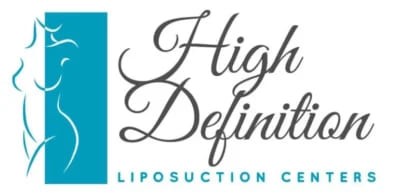Introduction: How long does it take to recover from liposuction?
Have you been wondering how long does it take to recover from liposuction? This is an important question as most of us lead a busy schedule caring for our families and having to go to work. How long does it take to recover from liposuction will determine if this surgery is even feasible. The length of surgery is determined by multiple factors. These include how much liposuction you will need in volume and the number of areas. In addition, you must consider whether you need to have your skin tightened using minimally invasive Renuvion J plasma or even more aggressive excisional surgery.
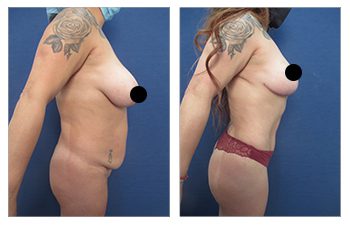
How much liposuction do you need?
How long does it take to recover from liposuction is dependent on the the scope of your body contouring. The number of areas requiring liposuction will affect your recovery phase. Areas that clients may consider include the front or the backside. On the front side, patients may consider fat cell removal from the abdomen, pubic region, flanks, medial thighs, medial knees, lateral chest, armpits(axilla), arms, and neck. On the back side, patients may consider the upper back, middle back, lower back, flanks, lateral thighs, and medial knees.
Usually, when all of your problem areas are treated as in a Lipo 360, you will have the most improvement. The safe limit of how much volume of liposuction can be removed measures 5L. Since 360 lipo is done by going all the way around you, you will naturally require a longer recovery as you will experience more soreness.
Why does liposuction procedure recovery have soreness?
Liposuction causes soreness by irritating nerves in the fatty tissue planes. Irritation of nerves occurs because a hollow bore cannula is used to traverse these tissue planes during the fat removal process. Although irritation of nerves is temporary, this is the first cause of soreness. Another cause of soreness following liposuction is caused by injury to microvessels which leak out pro-inflammatory products in the blood flow.
Even though we use a tumescent solution to constrict these microvessels pre-emptively, they will inevitably leak, as evidenced by the pink color of the aspirate observed in the liposuction retrieval canisters. These pro-inflammatory products will, in fact, excite sensory nerves causing soreness following surgery. As a result, the more areas you have liposuction, the more moderate pain you will experience.
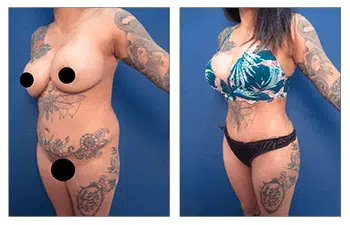
Skin tightening will cause a prolonged recovery process.
How long does it take to recover from liposuction is dependent on your skin looseness. An essential factor to consider during fat removal via liposuction is how much skin redundancy will be created. The analogy we use involves a fruit; if you de-pulp the fruit, you will be left with wrinkly skin. The same concept applies to the human body. If you just take out the fat without recognizing skin redundancy, you can get a botched liposuction job characterized by cellulitic or wrinkly skin appearance. As such, skin tightening is often required when considering liposuction. When you consider how long it takes to recover from liposuction, you must consider whether you will require skin tightening with Renuvion J plasma or require more aggressive excisional surgery.
Minimally invasive skin tightening
Minimally invasive skin tightening is accomplished by treating areas of skin redundancy with a combined radiofrequency and Helium plasma energy. This energy is administered through a sleek wand that can be introduced through the same port holes used for liposuction. The advantage of this technology is that it is safe and quick in its delivery, thus allowing us to treat any area in less than 5 minutes.
When performing 360 liposuction, we may want to tighten the skin over six different regions bilaterally. In essence, we can treat 12 areas in the above scenario in less than 1 hour! The other significant advantage of Renuvion J plasma skin tightening is that there are no lengthy incision lines to heal. As a result, for patients with minimal to moderate skin redundancy, the time it takes to recover from liposuction is minimized.
Excisional surgery to eliminate skin redundancy
Excisional surgery to eliminate skin redundancy is required when there is moderate to extensive skin redundancy. Most patients with this degree of skin redundancy demonstrate skin redundancy preoperatively even prior to liposuction and other cosmetic procedures. As such these patients will routinely be consented to excisional skin reduction procedures.
Excisional surgeries have been designed to allow for the elimination of for example abdominal skin using a mini or reverse tummy tuck. Lower back, flank and lateral thigh skin redundancy can be eliminated using a lower body lift. Medial thigh skin redundancy can be eliminated using a medial thigh tuck. Upper back skin redundancy can eliminated using an upper body lift.
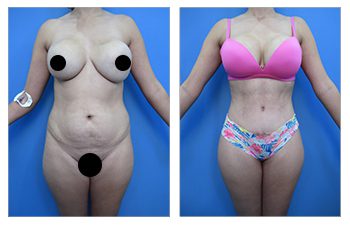
Preoperative measures are taken to reduce how long it takes to recover from liposuction.
Several preoperative measures can be taken to reduce how long it takes to recover from liposuction. The first is to stop all blood thinners. The most common culprits include Ginkgo Biloba, omega-3 fatty acids, also called fish oil, as well as Aspirin products (Advil, Aleve, Ibuprofen, and Motrin). These must be stopped a minimum of one month before surgery. We will ensure any pain medication is appropriate after surgery. Remember that the less you ooze blood, the fewer pro-inflammatories will be released to excite your sensory nerves and pain fibers. Another precaution patients can take includes optimizing their nutrition and protein levels.
Higher protein levels will increase both the albumin and prealbumin in your bloodstream so that the fluid in your vessels doesn’t leak out. The less fluid that leaks out, the less swelling you will experience. The less swelling, the less soreness, and the quicker you will be able to buy your exciting new outfits. A final measure involves eating a healthy diet and drinking plenty of water to speed up the healing process. This is essential for pre-surgery and post–surgery.
Postoperative measures reduce how long it takes to recover from a liposuction surgical procedure.
Several postoperative measures can be taken to reduce how long it takes to recover from liposuction. First, you should ensure you keep your nutrition up by ingesting at least 150 grams of protein daily. The second is to make sure that you are compliant with the wearing of your compression garments. These garments serve two roles; the first is to make sure that you don’t swell up; the second is that it prevent you from creating a contour irregularity by cushioning you from any external compression such as a band created from tight-waisted pants.
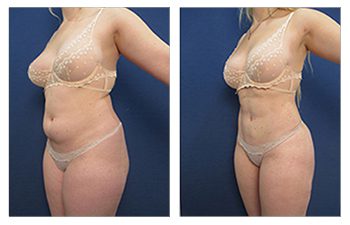
Conclusion: How long does it take to recover from liposuction?
In summary, how long does it take to recover from liposuction is dependent on multiple factors. If you are undergoing liposuction of one side, such as the front or back, you can expect soreness for 48 hours and return to daily chores as early as 5 to 7 days. If you are considering circumferential liposuction such as 360 lipo, then you should expect to be sore for 4 days and return to daily chores and light exercises in 7 to 10 days and strenuous activity after that. If you add Renuvion J plasma skin tightening, you can add another day to your recovery.
If you can avoid surgical incision lines, you will be expected to return to full physical activity as early as two weeks following liposuction surgery. If you do need surgical excision of redundant skin, then you should expect two weeks of recovery period before returning to your daily chores and one month before being allowed to participate in physical activities. We appreciate how important it is to determine how long takes for liposuction recovery. We encourage you to complete a complimentary virtual or in-house consultation so that you can get an even more accurate gauge of what your recovery after liposuction surgery will be like.
